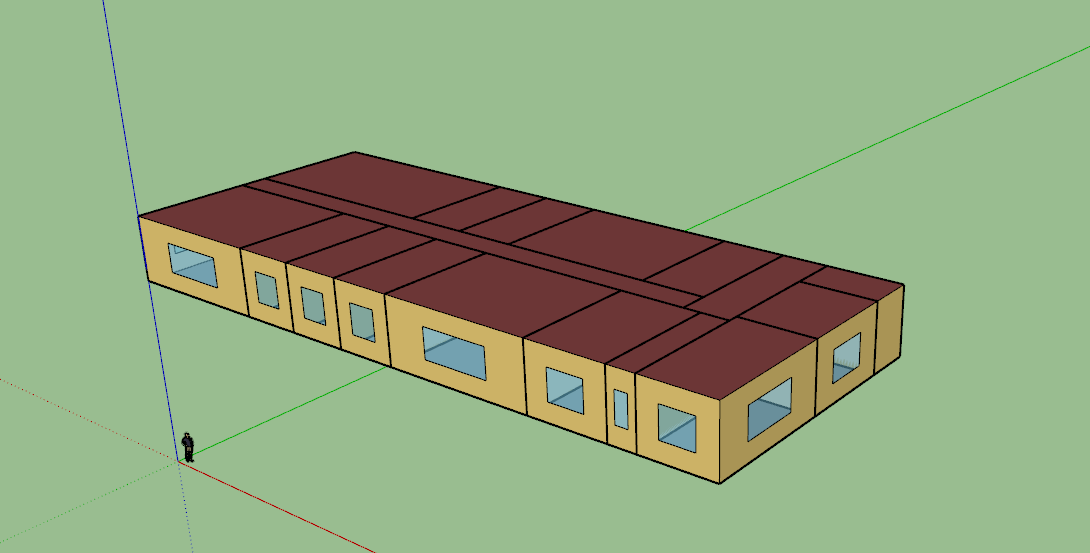Zone Multiplier: effect on Heating and Cooling Load
Hello,
I have a question regarding the Zone Multiplier function in EnergyPlus. I am modeling an office building of 5 floors and I was planning on modelling the middle one and use zone multiplier 5 on all zones. However, I noticed that the ratio of heating and cooling load differs strongly. I find this unusual as in my model have chosen adiabatic boundary conditions for the internal floors and ceilings, so I would expect heating and cooling loads to be around x5 (with a small difference of height effects). However, the results show that the total heating demand is lower and the cooling load much more:
When using Zone Multiplier 1for all zones:

When using Zone Multiplier 5 for all zones:

And this is my geometry:

Anyone more knowledge around why these results of heating and cooling consumption assume such different proportions when using zone multiplier?
Thanks in advance!







I noticed that the ratio also differs a lot when changing the Zone Multiplier of the EnergyPlus Example File: ASHRAE901_OfficeLarge_STD2019 from 10 to 1 or 20.
Which version of EnergyPlus?
I am using EnergyPlus 9.6, though I also noticed this in the recent versions.